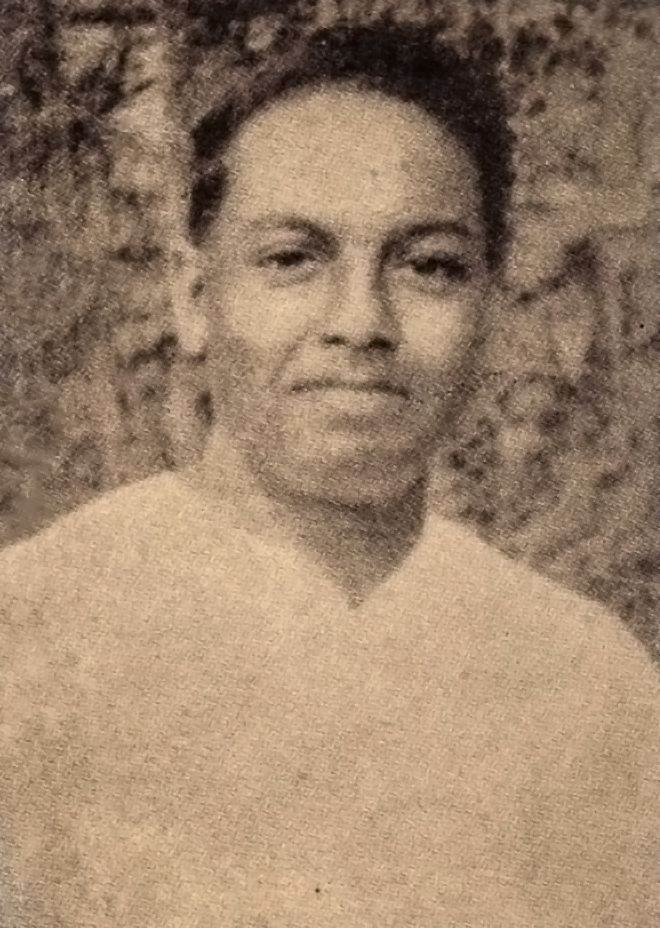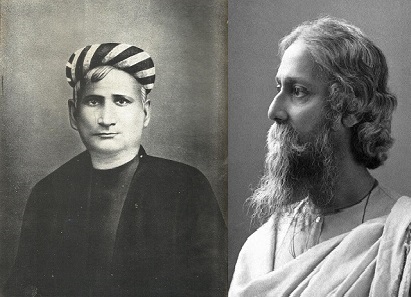|
Chidananda Dasgupta
Chidananda Das Gupta ( bn, চিদানন্দ দাশগুপ্ত) (20 November 1921 – 22 May 2011)—family name sometimes spelled 'Dashgupta' and ' Dasgupta'—was an Indian filmmaker, film critic, a film historian and one of the founders of Calcutta Film Society with Satyajit Ray in 1947. He lived and worked in Calcutta and Santiniketan. Early life Son of Shantilata and Manmathanath Dasgupta, a Brahmo missionary and social worker, he was born at Shillong, India in 1921. In 1944 he married, Supriya Das, a daughter of Brahmananda Dashgupta, brother of poet Jibanananda Das. His daughter Aparna Sen is a well known actress and filmmaker. Actress Konkona Sen Sharma is his granddaughter. Das Gupta first entered politics during the anti-British Quit India movement days of the 1940s, then began teaching at St. Columba's College, Hazaribagh, personal assistant to Prasanta Chandra Mahalanobis at the Indian Statistical Institute, Calcutta, teaching at City C ... [...More Info...] [...Related Items...] OR: [Wikipedia] [Google] [Baidu] |
Shillong
Shillong () is a hill station and the capital of Meghalaya, a state in northeastern India, which means "The Abode of Clouds". It is the headquarters of the East Khasi Hills district. Shillong is the 330th most populous city in India with a population of 143,229 according to the 2011 census. It is said that the rolling hills around the town reminded the British of Scotland. Hence, they would also refer to it as the "Scotland of the East". Shillong has steadily grown in size since it was made the civil station of the Khasi and Jaintia Hills in 1864 by the British. In 1874, on the formation of Assam as the Chief Commissioner's Province, it was chosen as the headquarters of the new administration because of its convenient location between the Brahmaputra and Surma valleys and more so because the climate of Shillong was much cooler than tropical India. Shillong remained the capital of undivided Assam until the creation of the new state of Meghalaya on 21 January 1972, when Sh ... [...More Info...] [...Related Items...] OR: [Wikipedia] [Google] [Baidu] |
Prasanta Chandra Mahalanobis
Prasanta Chandra Mahalanobis OBE, FNA, FASc, FRS (29 June 1893– 28 June 1972) was an Indian scientist and statistician. He is best remembered for the Mahalanobis distance, a statistical measure, and for being one of the members of the first Planning Commission of free India. He made pioneering studies in anthropometry in India. He founded the Indian Statistical Institute, and contributed to the design of large-scale sample surveys. For his contributions, Mahalanobis has been considered the father of modern statistics in India. Early life Mahalanobis belonged to a family of Bengali landed gentry who lived in Bikrampur (now in Bangladesh). His grandfather Gurucharan (1833–1916) moved to Calcutta in 1854 and built up a business, starting a chemist shop in 1860. Gurucharan was influenced by Debendranath Tagore (1817–1905), father of the Nobel Prize-winning poet, Rabindranath Tagore. Gurucharan was actively involved in social movements such as the Brahmo Samaj, acting as it ... [...More Info...] [...Related Items...] OR: [Wikipedia] [Google] [Baidu] |
Faizul Latif Chowdhury
Faizul Latif Chowdhury ( bn, ফয়জুল লতিফ চৌধুরী; born 3 June 1959) is a civil servant from Bangladesh, who currently serves as the director general of Bangladesh National Museum. Chowdhury has written on a variety of academic topics, including corruption in public administration, tax policy , economics of tax evasion and tax avoidance, smuggling, and international trade policy. He is also a translator of Bengali poetry, and has researched the modern poet Jibanananda Das. Currently he works at Independent University Bangladesh as adjunct professor business. Education and training Chowdhury studied science at the high school and pre-university college in Mymensingh, Bangladesh. He went to Mymensingh Zilla School for SSC and Ananda Mohan College for HSC. Later he studied Economics at the University of Dhaka for his Bachelor of Social Science and Master of Social Science degrees. He studied public policy at the Deakin University, Australia. Later, ... [...More Info...] [...Related Items...] OR: [Wikipedia] [Google] [Baidu] |
Banalata Sen
Banalata Sen ( bn, বনলতা সেন) is a Bengali poem written in 1942 by the poet Jibanananda Das that is one of the most read, recited and discussed poems of Bengali literature. The title of this lyric poem is a female character referred to by name in the last line of each of its three stanzas. A draft of the poem was also discovered that widely differs from the final version. Poet Jibanananda Das was a quiet person, who preferred to live in obscurity. Until the discovery of his diaries in the mid-1990s, it was considered unlikely that he could have been in love with a woman, with or without the name of Banalata Sen. However, Banalata Sen of Natore, a tiny town in the Rajshahi area of what was then Bengal, has become an emblem of feminine mystery as well as beauty and love. Introductory notes "Banalata Sen" was composed by Jibanananda Das in 1934 when he was living in Calcutta, at a time in his life when he had lost his job of Assistant Lecturer at the City College, Kolk ... [...More Info...] [...Related Items...] OR: [Wikipedia] [Google] [Baidu] |
Bengali Poetry
Bengali poetry is a rich tradition of poetry in the Bengali language and has many different forms. Originating in the Bengal region of South Asia, the history of Bengali poetry underwent three successive stages of development: poetry of the early age (like ''Charyapad''), the Medieval period and the age of modern poetry. All ages have seen different forms of poetry and poetical tradition. It reached the pinnacle during the Bengali Renaissance period although it has a rich tradition and has grown independent of the movement. Major Bengali Poets throughout the ages are Chandidas, Alaol, Ramprasad Sen, Michael Madhusudan Dutt, Nabinchandra Sen, Rabindranath Tagore, Dwijendralal Ray, Satyendranath Dutta, Kazi Nazrul Islam, Jibanananda Das, Jasimuddin, Sukanta Battacharya, Al Mahmud. Introduction Poetry in the colloquial dialect of Bengal first originated from Prakrit, and based upon local socio-cultural traditions. It was antagonistic towards Vedic rituals and laws as oppos ... [...More Info...] [...Related Items...] OR: [Wikipedia] [Google] [Baidu] |
Manik Bandopadhyay
Manik Bandyopadhyay lias Banerjee(; 19 May 1908 – 3 December 1956) is an Indian Litterateur regarded as one of the major figures of 20th century Bengali literature. During a lifespan of 48 years and 28 years of literary career, battling with epilepsy from the age of around 28 and financial strains all along, he produced some masterpieces of novels and short stories, besides some poems, essays etc. Early life Manik was born on 19 May 1908 in Dumka, a small town of Santhal Parganas district in the state of the then Bihar (now under Jharkhand) in British India in a Bengali Brahmin family. His good-name was Prabodh Kumar Bandyopadhyay and Manik was his nickname. His ancestral home was in Malapadiya village of Bikrampur in Dacca district (present day Bangladesh). His father was Harihar Bandyopadhyay and mother Niroda Devi. They had fourteen children (ultimately ten survived) and Manik was fourth of the six sons with all four elder sisters. His father, who joined in government ser ... [...More Info...] [...Related Items...] OR: [Wikipedia] [Google] [Baidu] |
Rabindranath Tagore
Rabindranath Tagore (; bn, রবীন্দ্রনাথ ঠাকুর; 7 May 1861 – 7 August 1941) was a Bengali polymath who worked as a poet, writer, playwright, composer, philosopher, social reformer and painter. He reshaped Bengali literature and music as well as Indian art with Contextual Modernism in the late 19th and early 20th centuries. Author of the "profoundly sensitive, fresh and beautiful" poetry of '' Gitanjali'', he became in 1913 the first non-European and the first lyricist to win the Nobel Prize in Literature. Tagore's poetic songs were viewed as spiritual and mercurial; however, his "elegant prose and magical poetry" remain largely unknown outside Bengal. He was a fellow of the Royal Asiatic Society. Referred to as "the Bard of Bengal", Tagore was known by sobriquets: Gurudev, Kobiguru, Biswakobi. A Bengali Brahmin from Calcutta with ancestral gentry roots in Burdwan district* * * and Jessore, Tagore wrote poetry as an eight-ye ... [...More Info...] [...Related Items...] OR: [Wikipedia] [Google] [Baidu] |
Diptendu Pramanick
Diptendu Pramanick (July 18, 1910 – December 15, 1989) was a Bengali film personality from Calcutta. He was the founder secretary of the ''Eastern India Motion Pictures Association'' in Calcutta, India - a fraternity of film personnel which is an interface between the entertainment industry of eastern India and the Government. During his multifarious career he came in contact with eminent personalities and saw the evolution of this organization from its initial days to being a regionwide entity. Early life and education He was born on 18 July 1910 in Calcutta. He was the eldest son of Sudhamoy Pramanick from Shantipur. He did his early schooling in Calcutta and then at the Raiganj Coronation School, Raiganj where his father practised as a lawyer. In 1926 he returned to Calcutta and cleared Matriculation followed by the Intermediate examinations in Science in 1928. He then joined the Scottish Church College, Calcutta. His interactions with many a revolutionary (due to ... [...More Info...] [...Related Items...] OR: [Wikipedia] [Google] [Baidu] |
Ammu Swaminathan
Ammu Swaminathan or A. V. Ammakuti (22 April 1894 – 4 July 1978) was an Indian social worker and political activist during the Indian independence movement and a member of the Constituent Assembly of India. Early life Ammukutty Swaminadhan was born into the Vadakkath family of Anakkara in Ponnani taluk, Kerala. Her father, Govinda Menon, was a minor local official. Both of Ammu's parents belonged to the Nair caste, and she was the youngest of their thirteen children, which included nine daughters. Ammu never went to school and received only a rudimentary education at home, which consisted of minimal reading and writing in Malayalam, cooking and keeping house, to prepare her for married life. She lost her father at a very young age, and her mother struggled to raise her children and arrange marriages for her many daughters. Resultantly, when Ammu was 13, her mother arranged an alliance for her which conformed to the Sambandam system which was well accepted in Kerala society a ... [...More Info...] [...Related Items...] OR: [Wikipedia] [Google] [Baidu] |
Federation Of Film Societies Of India
Federation of Film Societies of India (FFSI) is the umbrella body of film-screening societies in India. FFSI is currently a member of the International Federation of Film Society that has its Central Office in Paris. The international organisation is an associate member of UNESCO. History FFSI was established on 13 December 1959 with its Registered and Central Offices in Calcutta (now Kolkata) by the coming together of a group of officials representing six existing film societies in the country, namely Calcutta Film Society, Delhi Film Society, Madras Film Society, Patna Film Society, Bombay Film Society and Roorkee Film Society. The moving spirit behind the concept was the eminent film director-writer-music composer-screenplay writer-graphic artist-type font designer-short story writer Satyajit Ray who along with his colleagues from the Bengali language film industry came together to join hands to bring international cinema and Indian regional film efforts before a generation ... [...More Info...] [...Related Items...] OR: [Wikipedia] [Google] [Baidu] |
Harisadhan Dasgupta
Harisadhan Dasgupta (1923–1996) was an Indian film director from Calcutta who was most prolific in the 1950s and 1960s. Dasgupta specialized in surveying subjects of fascination to the Bengali public. Dasgupta attended the University of Southern California and later the University of California, Los Angeles to study film-making.Harisadhan Dasgupta. Bengali Vaidyas. He studied for a time under Hollywood producer . Upon completing an apprenticeship, he returned to Calcutta to produce documentaries. Over a lengthy career, Dasgupta produced many documentaries, long and short. He was best known for his English language documentaries on the Bengali people's situation, ... [...More Info...] [...Related Items...] OR: [Wikipedia] [Google] [Baidu] |




